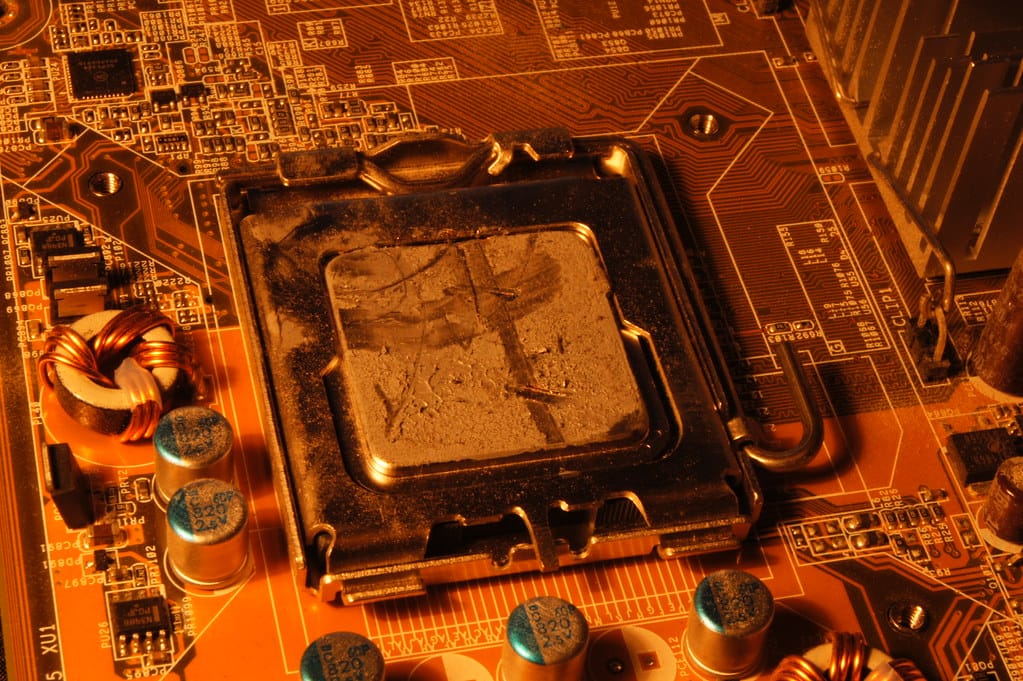AMD Points Fingers at Motherboard Partners as CPU Damage Reports Surge
AMD is under fire as reports of damaged processors continue to mount, but the chip giant is pushing back hard—placing blame squarely on motherboard manufacturers for implementing unsafe voltage settings that are literally burning out CPUs. This escalating controversy has sent shockwaves through the PC building community and raised serious questions about quality control across the hardware ecosystem.
The Burning Issue
Reports of damaged AMD processors have been circulating in tech forums and social media for weeks, with users posting images of visibly scorched CPUs and tales of expensive hardware failures. The problem appears to be concentrated around certain motherboard models that are reportedly delivering excessive voltage to AMD's latest generation processors, causing irreversible damage to the delicate silicon circuits.
What makes this situation particularly concerning is that these failures aren't limited to extreme overclocking scenarios. Some users report CPU damage occurring under normal operating conditions, suggesting that the voltage management issues may be more widespread than initially thought.
AMD's Defense Strategy
In response to mounting criticism and warranty claims, AMD has taken an unusually direct approach—publicly calling out motherboard manufacturers for poor implementation of voltage regulation. The company's technical teams have identified specific instances where motherboard BIOS settings are delivering voltages well above safe operating parameters, even when processors are running at stock speeds.
"We've observed motherboard implementations that ignore our voltage guidelines," an AMD spokesperson stated in recent communications to hardware partners. The company has pointed to specific examples where voltage delivery exceeds their recommended thresholds by significant margins, creating conditions that can lead to rapid CPU degradation or immediate failure.
Industry Finger-Pointing Intensifies
Motherboard manufacturers aren't taking AMD's accusations lying down. Several major board partners have issued counter-statements suggesting that AMD's voltage specifications may be inadequate or unclear, forcing them to implement higher voltages to ensure system stability.
This blame game has created a perfect storm of confusion for consumers, who are caught between two critical hardware partners pointing fingers at each other while expensive CPUs continue to fail. The situation has been further complicated by the fact that different motherboard models from the same manufacturer may handle voltages differently, making it difficult for users to identify safe options.
Consumer Impact and Warranty Concerns
For PC enthusiasts and system builders, this controversy represents more than just technical squabbling—it's hitting wallets hard. High-end AMD processors can cost several hundred dollars, and when they fail due to voltage issues, consumers often face complex warranty battles to determine who's responsible for replacement costs.
Some users report being caught in warranty limbo, with AMD pointing to motherboard issues and motherboard manufacturers suggesting CPU defects. This situation has prompted many to document their system configurations meticulously and monitor voltages closely using specialized software.
Technical Solutions and Workarounds
While the corporate blame game continues, the tech community has begun developing practical solutions. Experienced users are sharing BIOS configurations that implement more conservative voltage settings, and several hardware monitoring tools have been updated to provide better voltage tracking and warnings.
Some motherboard manufacturers have quietly released BIOS updates that address voltage regulation issues, though they've been reluctant to acknowledge these updates are directly related to the CPU damage reports. These updates typically include more restrictive voltage limits and improved automatic voltage scaling.
Looking Forward: Industry Accountability
This controversy highlights a critical weakness in the modern PC hardware ecosystem—the complex interdependence between CPU and motherboard manufacturers that can leave consumers vulnerable when coordination breaks down. As processors become more sophisticated and voltage requirements more precise, the margin for error in motherboard implementation continues to shrink.
The situation also underscores the importance of thorough compatibility testing and clearer communication between hardware partners. Whether AMD's specifications were inadequately communicated or motherboard manufacturers took excessive liberties with voltage delivery, the end result is the same—damaged hardware and frustrated consumers.
As this story continues to develop, consumers should carefully research motherboard compatibility, monitor system voltages, and maintain detailed documentation of their hardware configurations. The ultimate resolution of this dispute will likely require better industry standards and clearer accountability frameworks to prevent similar issues in the future.
